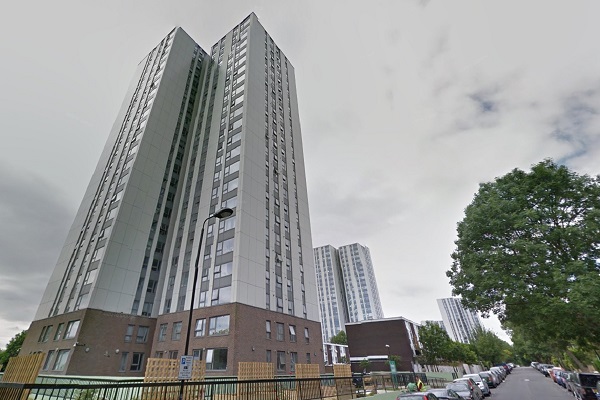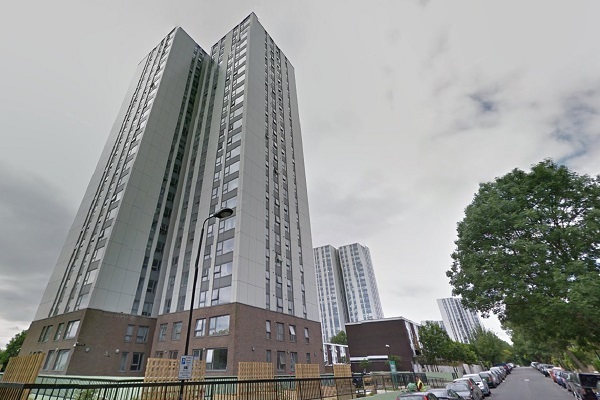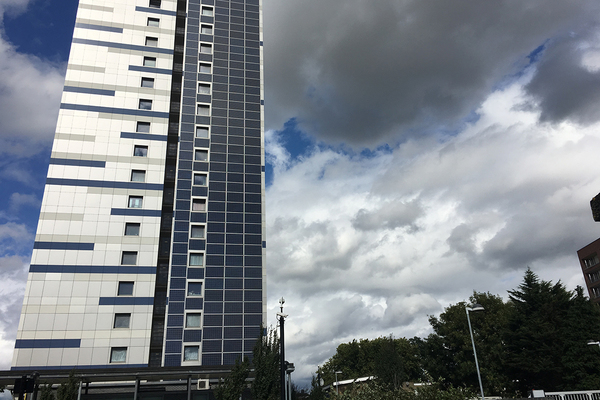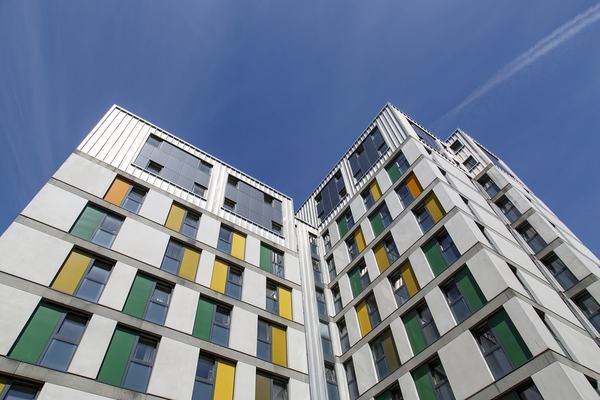You are viewing 1 of your 1 free articles
Chalcots Estate fire safety work to take two years as costs rise to £90m
Fire remediation work on the Chalcots Estate in north London is expected to take more than two years, with the estimated cost increasing to nearly £90m.
Work which includes the replacement of cladding at the 717-home Camden estate is not expected to start until the summer, with the full contract including design expected to last 124 weeks – nearly two-and-a-half years.
This would mean work could be completed as late as the summer of 2021, nearly four years after thousands of residents were evacuated over fire safety concerns days after the Grenfell Tower fire tragedy.
The duration of the contract was revealed in council papers published this week which confirmed Wates as the preferred bidder for the deal which will also include the replacement of windows and curtain walls across the estate’s five blocks.
The final cost of Wates’ contract is estimated at £89.69m, nearly double the £56m figure estimated by the council in March 2018.
In October, Camden secured £80.6m from the Ministry of Housing, Communities and Local Government as part of the £400m remediation fund for social housing.
The council has so far spent £16m of this fund on the removal of cladding on the Chalcots Estate, professional fees and contingency. This means Camden must find £26.5m from its own funds to cover the work.
The council said that this rise in the estimated contract price from March was due to changes of scope and specification of works which developed during the removal of cladding and subsequent surveys of the building.
This additional work includes the replacement of brickwork on the bottom floors and replacement of the roof parapets.
Camden had pledged to use a A1-rated replacement cladding system, the highest fire safety rating, which was similar in appearance to the original cladding.
However, a letter informed residents in November that the council could not source A1-rated aluminium panels with a similar to finish to the original panels and would need to change the panels being used to another A1-rated system.
The council must now submit a planning amendment which will go out to consultation early this year, and is expected to take 12 weeks to process.
A Camden Council spokesperson said: “We must follow the correct procedures but within these parameters we have consistently acted quickly – from being the first council in the country to commit to removing ACM [aluminium composite material] cladding, completely removing this within a matter of months, carrying out extensive safety work on the interior of the buildings and, now, fast tracking the decision process so we can progress the design work needed to get on with fitting the new panels and curtain wall.”
He added that the aluminium panels were the preferred option of residents when agreed upon last year.
Partners for Improvement Camden (PFIC) signed a £150m private finance initiative deal with Camden Council in 2006 to carry out refurbishment works on the estate, which saw the Grenfell-style cladding installed.
Camden cancelled its payments to PFIC in November 2017 and took over the repairs work after in May 2018 after PFIC filed for insolvency.
The Camden spokesperson said that it was taking the final steps in terminating the private funding initiative agreement and it will also begin the process of taking legal action against the sub-contractors to recover the costs we have already spent.
Wates has been chosen as the preferred bidder for the work with its appointment expected to be put in front of Georgia Gould, leader of Camden Council, on 8 January for her approval.
The contractor has been providing fire stopping works on the estate over the past year. In November, it took control of all the five blocks after Mulalley and Kier which were providing similar works after their contracts come to an agreed end.
Timeline: a short history of cladding and building regulations
- January 2000 - Following the tower block fire at Garnock Court - which killed a pensioner with disabilities - a report by the Environment, Transport and Regional Affairs Committee concluded that building regulations required "external surfaces (and hence cladding)... should be of a material classified as 'Class O' for spread of fire". It adds: "We do not believe that it should take a serious fire in which many people are killed before all reasonable steps are taken towards minimising the risks [from cladding fires]."
- January 2008 - The British Board of Agrément provides a certificate confirming a Class 0 rating for Reynobond PE, the material later installed on Grenfell Tower
- March 2013 - The coroner investigating the Lakanal House blaze in south London, which killed six, writes to Eric Pickles, communities secretary, advising him to review official guidance contained in Approved Document B "with particular regard to the spread of fire over the external envelope of a building". Mr Pickles replies, indicating that changes will not made until "2016/17"
- July 2014 - At a meeting of the Centre for Window and Cladding Technology, the government is warned that its guidance is not clear enough to prohibit the use of aluminium composite cladding with a polyethylene core (ACM(PE)) on tall buildings, which has been linked to a number of fires worldwide. The Building Research Establishment agrees to draft an 'FAQ' making it clear that this material is prohibited, but never does.
- 14 June 2017 - A kitchen fire at Grenfell Tower, west London, spreads to the recently installed ACM(PE) cladding. The resulting fire totally engulfs the building, trapping residents and killing 72 people.
- 22 June 2017 - The government writes to social landlords claiming ACM(PE) is banned by guidance, despite its failure to clarify this point before the fire. Philip Hammond, chancellor, repeats this claim on the BBC's Andrew Marr Show.
- 17 May 2018 - The government announces plans to ban combustible materials on high rises buildings, and later publishes draft 'clarified' guidance, removing the passage which had been interpretted as permitting 'Class 0' cladding.












